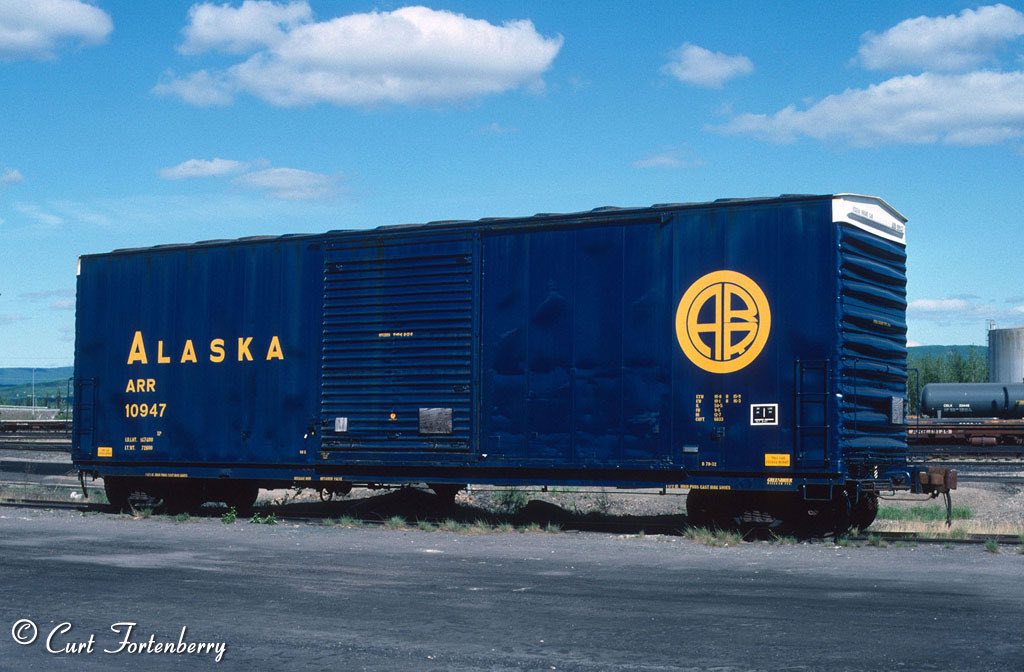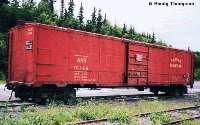 |
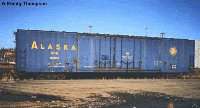 |
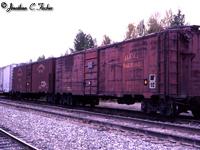 |
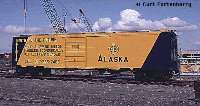 |
| Boxcar number 10366 in Healy, AK (7/4/98). These were built by Pullman Co. or A.C.&F. in 1943. These ex-Troop sleeper/kitchen cars were rebuilt by C.F.C&P. in 1948 & put into service. Only a handful of these are still in MOW use with the rest turned over for scrapping. | Sixty-foot insulated boxcar #10803 at Anchorage (10/8/98). This car was made by P.C. & F. and the ARR purchased 35 of them (nos. 10800-10834) in 1965. More | Boxcar #10515 | The ARR used several boxcars as billboards. They were placed by the Anchorage depot in early 1981 and were pulled out sometime between 1986 and 1991. One of these cars now sits behind the ML&P yard on First Avenue in Anchorage. |
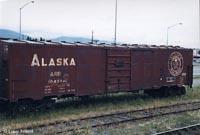 |
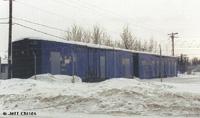 |
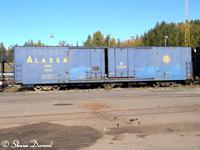 |
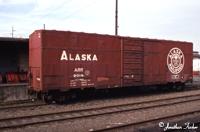 |
| This is the old style ARR boxcar. Sometimes a box car is converted to an ice reefer like this one. | Old boxcars never die they just change their owners. These boxcars had their trucks removed and are now used as commercial storage units. I remember traveling out west and seeing home owners use them as storage barns. | Still in use as of September 2006! | Boxcar 8018 |
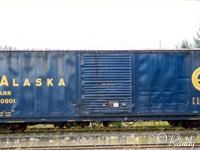 |
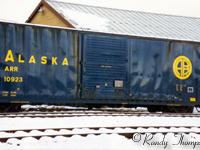 |
 |
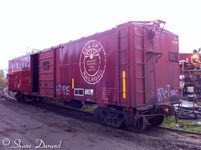 |
| PC&F 6033cf Hi-Cube boxcar | PC&F 6033cf Hi-Cube boxcar | HiCube boxcars (8000 series) | Troop Car 10240 scrapped in 2010 |
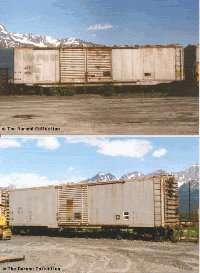 |
These silver boxcars are the AAR standard design.
They were built by Pressed Steel, Thrall, Pullman Std. from 1943 to 1957.
The ARR acquired 10150 through 10162 in 1980. These cars are ex-Navy, which
is why they are silver. The ARR never repainted them.
The ARR keeps a small fleet of the double doors and 1 1/4 doors around for company MOW use. This means they are used when the company needs items moved. Portage section may need more charcoal for the tunnel heaters so a box is loaded and spotted at Portage. Hurricane needs a new water heater, it's loaded and the car is dropped off one day and picked up the next. See also 1, 2, 3 |
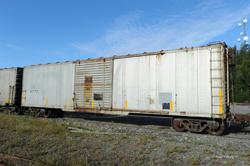 |
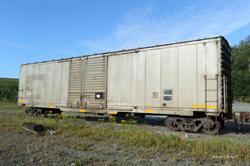 |
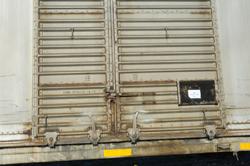 |
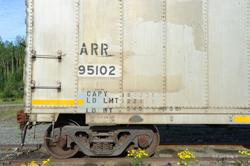 |
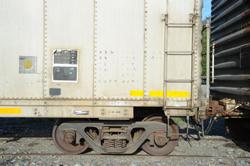 |
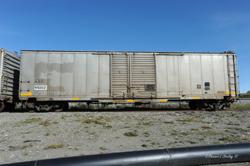 |
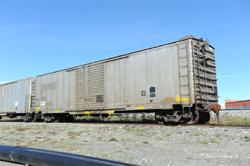 |
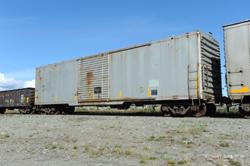 |
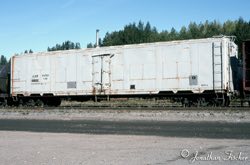 |
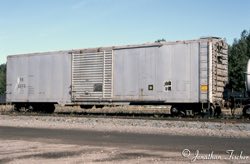 |
On 1/26/15 Curt Fortenberry added:
ARR had the following ex USN boxcars. All ARR did was paint out the navy markings, so all remained silver in color:
10150-10162 50' double 7 1/2' doors
10175-10181 4' & 6' doors
More boxcar photos: 8005, 8012, 10152, 10155, 10181, 10351, 10717, 10729, 10801, 10913, 11042, 11723, ARCX 3011, MoW at Hurricane
March 10, 2011 Update by David Blazejewski:
To answer your question the "new" boxcars you saw are actually leased
from CIT Rail and carried CEFX reporting marks before we picked them up. They
replaced the 109xx series boxcars whose leases had expired and rather than renew
those we chose to lease these "new" cars for a better price. There
are 14 total and will move in interchange service between the lower 48 and Alaska
mostly in drilling mud service to/from Fairbanks.
The numbers are :
ARR 50528
ARR 50494
ARR 50577
ARR 50559
ARR 50570
ARR 50493
ARR 50518
ARR 50576
ARR 50596
ARR 50511
ARR 50595
ARR 50539
ARR 50573
ARR 50592
Click here for the Equipment Identification File (EIF).
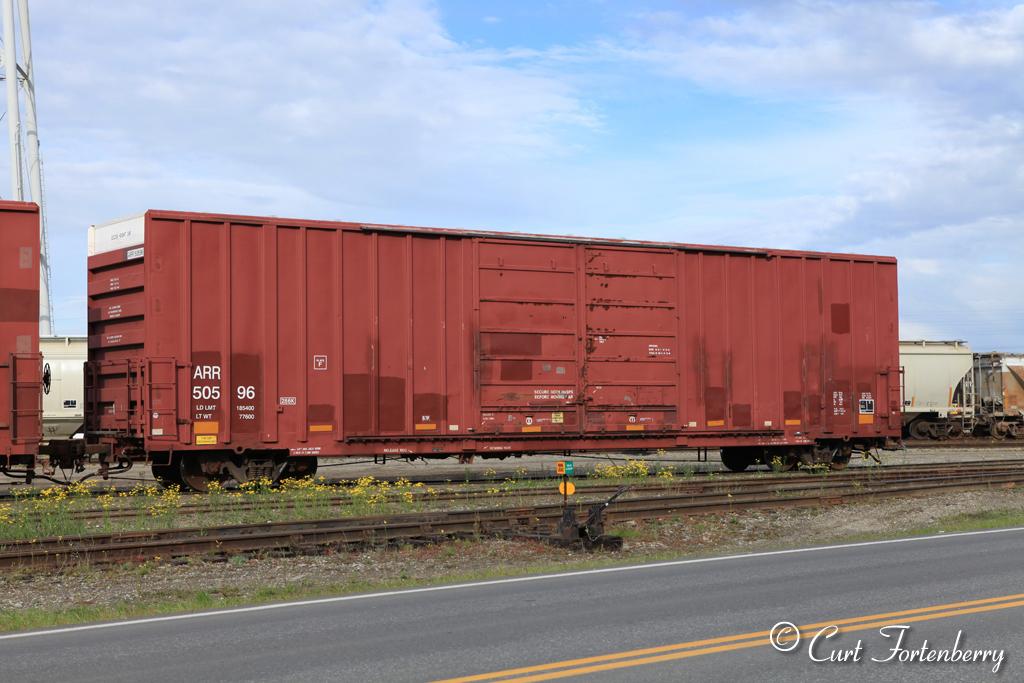
Photo courtesy of Curt Fortenberry
Fairbanks, September 14, 2011
Photo courtesy of Curt Fortenberry
PC&F boxcar #10947, Fairbanks, May 15, 1995
See also:
- 1587s
- No. 10775
- Old boxcars at McKinley siding
- WWII Troop Sleeper #1557
- #10320 in Seward (5/86)
- Engineering drawing for 10100-10129
- Four boxcars in Seattle
- Rusty Wendlandt's Portage pix of #10632, #901554 and #901563
Thanks to Jeff Childs, Casey Durand and Curt Fortenberry for providing various information!
Page created 3/8/99 and last updated 4/24/23

